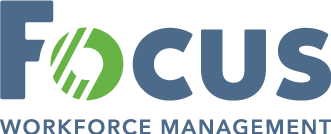The Bottom Line - Banking on People

Banking on People
A-players: what to look for and how to spot them
Great companies have great people. It’s that simple, and that complex at the same time. While it’s an easy concept to grasp, it might just be the most difficult part of business to get right.
Since banking is a very personal and confidential service business, we spend a lot of time thinking, talking and caring about our people. We’re constantly asking ourselves “How do we find the best? How do we help them grow? How do we motivate them to keep growing with us?”
Which is why I’ve found it helpful over the years to simplify the process by focusing on two main traits: aptitude and attitude.
I know there are many, more precise ways to assess the personhood, potential, and professionalism of any candidate or associate, but these two fundamental characteristics are good ones to anchor on and develop.
Why aptitude? Because it’s most closely associated with I.Q. – or intelligence and productivity – which we need for technical calculations, industry knowledge, and sound decision-making.
Why attitude? Attitude is a measure of E.Q. – a knowledge of self and emotional regulation – it’s an indicator of self-awareness, self control and teamwork/consideration for others.
I like to think of aptitude and attitude as the x-y axes of a people-rating graph. And then picture the highest ratings going up and to the right, with the “Upper Right Quadrant” as the ideal position, indicating the highest levels of aptitude and attitude among your people.
Getting everyone in that upper right quadrant – turning them into A-players – is the goal.
But how can we identify A-players? Industry research and findings show us that the best candidates and associates:
Set stretch goals and adopt high standards for themselves. They also encourage others to achieve exceptional results.
Work collaboratively. They solve problems and find the necessary skill sets within other team members.
Volunteer to represent. They want to represent their group to other departments or units within the organization.
Embrace change. They are quick to embrace change in both tactics and strategy.
Take initiative. They develop a habit of self-starting and going the extra mile.
Walk the talk. They do what they say they are going to do.
Use good judgment. They don't wing it, but rather research it carefully, weigh options, and then proceed with a sound plan.
Display resilience. They acknowledge mistakes and move on.
Give candid feedback. They provide feedback in a way that is a gesture of good will.
In our offices and branches we don’t think it’s enough to simply know about these quadrants and characteristics. We think you’ve got to honestly ask yourself on a regular basis “How am I doing?” and “What quadrant am I in?” and finally, “What can I do to get into the upper right quadrant?”
So, hire slowly and carefully, coach regularly, and move people up or out expediently. It requires hard work, attentive leadership, and significant investment in the process, but the returns are always worth it. I wish you resoluteness in this area – and all the positive results that come with it.

— Paul Thompson, Chairman & CEO, Country Club Bank – Member FDIC
Economic Insights
Another positive CPI report for June: Inflation comes in at just 3%
Finally, the Fed may have inflation reliably heading in the right direction. Inflation anxiety continued to fade with the Bureau of Labor Statistics’ June 2023 CPI report showing a full 1-point drop to 3% year-over-year, marking the 12th straight month of decline and the lowest rate since March 2021.
Giving further hope to markets and recession watchdogs is the significant positive movement in the core measure (which excludes food and energy), which fell to 4.8%, unseen since October 2021.
Housing (one of the biggest drivers of the core measure) continues to drive the broader numbers lower as pricing pressures recede. Shelter costs increased by only 0.4% in June (4.8% annualized) – a welcome slowdown – compared to the preceding 12 months, being up 7.8%. A likely contributor to this slowdown is additional supply in the multi-family market. CBRE (the world’s largest commercial real estate services and investment firm) expects over 700,000 multi-family unit deliveries in 2023 and 2024 combined, or the largest such supply increase since the 1980s. Many of these projects were started prior to interest rates increasing, so one would expect a dramatic fall off in supply growth starting in 2025.
In more good news for individual consumers and families, the cost of food was up a modest 0.1% in June (1.2% annualized), led by the cost of food away from home, which went up 0.4% (4.8% annualized and driven by the need to help offset wage inflation). The price of food at home was flat for the month and only a third of the major food groups saw increases. While all of this is positive news, we do need to keep an eye on the recent grain developments in Ukraine (a top 7 producer and $5B+ exporter of: sunflower oil, corn, and wheat.)
Bottom Line: While this month’s report shows inflation moving closer to the Fed’s desired 2% target inflation rate, the Fed resumed lifting interest rates this month with a quarter-percentage-point increase. The decision to raise the benchmark federal-funds rate to a range between 5.25% and 5.5% follows a brief pause in increases last month. It is the 11th rate rise since March 2022.
Inflation has come a long way from the 9.1% peak in June 2022, but the Fed has been clear that rate hikes will still be considered until the CPI moderates more predictably.
The labor market has been an aggravating factor in the Fed’s efforts to curb inflation and it appears that will continue as well given the age 65+ cohort continues to grow faster than the workforce. We are also starting to see unions flex their muscle with the joint strike of writers and actors in Hollywood, and the Teamsters recently reaching an agreement with UPS highlighted by guaranteeing no less than $21 per hour for part-timers and pilot unions signing large increases (United as an example with an up to 40% increase over the next 4 years). However, the past year has seen a slowing rate of jobs growth amid a cooling demand for workers and a wave of layoffs in the tech sector.
Even with the positive CPI report, at least one more rate increase this year is not out of the question. Yes, the possibility of a recession still looms, but a more dovish tone on policy decisions may be on the horizon.

— Marcus Scott, CFA, CFP®, Chief Investment Officer (CIO) for Country Club Trust Company
CFA® and Chartered Financial Analyst® are registered trademarks owned by CFA Institute.
Certified Financial Planner Board of Standards Inc. (CFP Board) owns the certification marks CFP®, CERTIFIED FINANCIAL PLANNER™, CFP® (with plaque design), and CFP® (with flame design) in the U.S., which it authorizes use of by individuals who successfully complete CFP Board's initial and ongoing certification requirements.
The opinions and views expressed herein are those of the author and do not necessarily reflect those of Country Club Trust Company, a division of Country Club Bank, or any affiliate thereof. Information provided is for illustrative and discussion purposes only; should not be considered a recommendation; and is subject to change. Some information provided above may be obtained from outside sources believed to be reliable, but no representation is made as to its accuracy or completeness. Please note that investments involve risk, and that past performance does not guarantee future results.
Pro Tips for Workforce Management
Prospective Employees – At All Levels – Are Still in the Driver’s Seat. Here’s How To Steer Them Towards Your Business.
 Jason Rawlings has hired thousands of warehouse and manufacturing employees over the last 20-plus years.
Jason Rawlings has hired thousands of warehouse and manufacturing employees over the last 20-plus years.
From plant managers, to forklift drivers, and every role in between, Rawlings and his team at Focus Workforce Management, help large-scale distribution and manufacturing companies find and hire large numbers of employees. Focus provides direct hire, staffing, and onsite workforce management services for employers nationwide with high-volume employment needs.
Rawlings’ expertise and services are in particularly high demand these days with record-low unemployment rates hovering around 3.5%, employers are doing anything they can to attract, hire and retain good workers.
“Candidates and employees simply have more choice than they’ve ever had before and hiring is very tight at all levels,” Rawlings said. “Flexibility and creativity are crucial for finding people right now.” According to Rawlings, a new mindset has taken hold among workers, and it’s been driven by a desire for flexibility, selection, and higher wages, all of which have been enabled through gig economy opportunities such as Uber, Etsy and Instacart.
“Opportunities are everywhere now and employees just aren’t as loyal,” Rawlings added. “They don’t have to be since they know they can go down the street and make just as much if not more, and perhaps even upgrade their benefits and schedule.”
Companies in need of high numbers of assembly, warehouse, or manufacturing workers simply need to be more flexible and creative in their job design and hiring practices. Rawlings recommends that employers thinks about these factors if they want to continue to attract and find enough workers:
Candidate screening flexibility. Not all roles require spotless background checks and screenings. Be open to those candidates who may have had troubled pasts since they can sometimes be some of your hardest-working and most loyal employees when given a chance.
Scheduling adaptability. Consider revised start times, shift lengths, and working days. Perhaps two part-time employees would work better than one full-time?
Pay range generosity. One level of pay does not fit all. Be willing to pay more for better attitudes, more experience, and more potential.
Enrichment and education offers. Give employees a path to certification or new skills training. Language education can be included for multicultural employee populations.
Employers simply need to be open to new strategies and tactics when it comes to developing their workforces. Thinking about it from the employees’ perspective can make a big difference as well.
“Think about the employee and what is likely to make them happy to join and happy to stay,” Rawlings said. “Small adjustments can pay off in big ways in terms of productivity, retention and overall company culture.”
Banking On KC Podcast
René Bollier of André’s Chocolates: Continuing a Sweet Tradition
 Over six decades ago, a master pastry chef made what would seem like an improbable decision to leave his Swiss homeland and trek thousands of miles in pursuit of his dream of starting his own confectionery business.
Over six decades ago, a master pastry chef made what would seem like an improbable decision to leave his Swiss homeland and trek thousands of miles in pursuit of his dream of starting his own confectionery business.
That chef was André Bollier. And that dream manifested itself in the beloved Kansas City institution known as André’s.
Banking on KC Podcast’s Kelly Scanlon sat down with René Bollier – president of André’s Chocolates and grandson of its founder – to hear about the unique genesis of the company, learn what makes Swiss chocolate so enticing, discover where Andre’s is headed, and much more. Listen to this fascinating podcast now.

Small Business Education & Outreach
How Robust is Your Financial Reporting?

When it comes to the M&A process, pre-sale preparation can significantly enhance valuation and the chances of success. The quality of a company’s financial reporting plays a significant role in that.
While most companies have financial reporting capabilities, the level of sophistication varies significantly across the board. So how do you assess a company’s financial reporting capabilities? There are a few questions that you can ask:
- Does the company utilize a CPA to prepare and review the financial statements?
- Are the financials prepared on a Cash or Accrual basis?
- How often are financial statements produced?
- Are the financial statements prepared in a consistent manner?
- Does the company have controls around financial reporting?
- Does the company have an ERP system in place to accurately track and capture transaction data?
- Does the company track KPIs and other important metrics that are not included in the financial statements?
— Trent Barnes, Investment Banking Analyst for CC Capital Advisors, Inc.
CC Capital Advisors, Inc. is a subsidiary of Country Club Bank.
Member FINRA, SIPC.
Newsletter Sign-Up